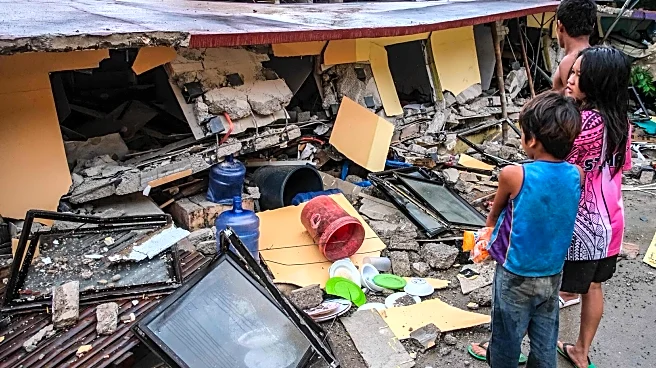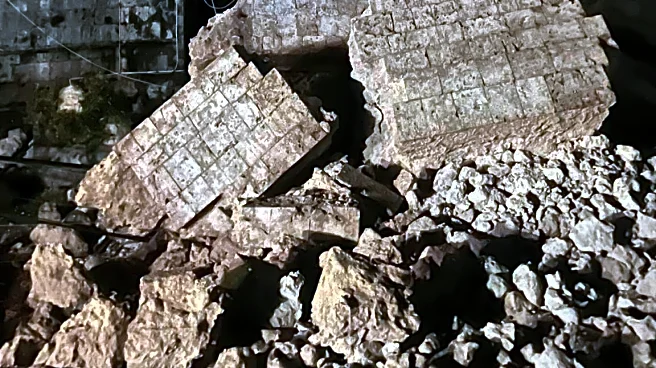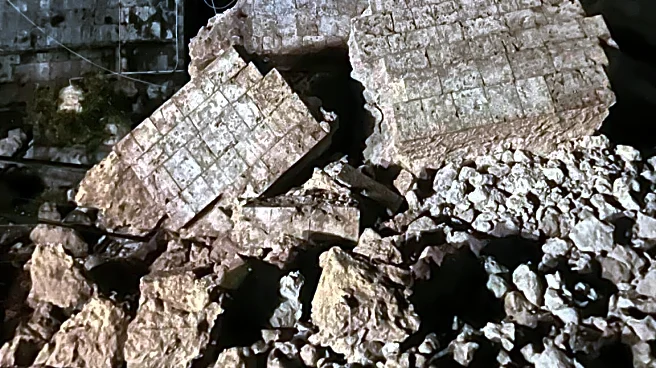What's Happening?
A powerful 6.9-magnitude earthquake struck the central Philippines, particularly affecting Cebu province, resulting in at least 69 deaths and numerous injuries. The earthquake occurred at about 10 p.m. on Tuesday, causing significant structural damage, including collapsed buildings and impassable roads. Rescuers are using backhoes and sniffer dogs to search for survivors in the affected areas. The Philippine Institute of Volcanology and Seismology issued a brief tsunami warning, which was later lifted. The region is known for its seismic activity due to its location on the Pacific 'Ring of Fire.'
Why It's Important?
The earthquake highlights the vulnerability of the Philippines to natural disasters, given its location on the Pacific 'Ring of Fire.' The immediate impact includes loss of life, injuries, and significant damage to infrastructure, which will require substantial recovery efforts. The disaster also underscores the need for improved disaster preparedness and response strategies in the region. The economic impact could be severe, affecting tourism and local businesses, as Cebu is a popular tourist destination.
What's Next?
Authorities are assessing the damage and potential aftershocks in the affected areas. Recovery efforts are underway, with a focus on rescuing trapped individuals and providing aid to those affected. The government may need to allocate resources for rebuilding and strengthening infrastructure to withstand future seismic events. The disaster could prompt discussions on enhancing disaster preparedness and response mechanisms in the Philippines.












